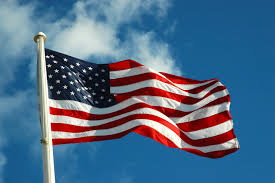To Stand Or Not To Stand: The Pledge of Allegiance at West High School

Source: Time Magazine
February 11, 2020
I pledge allegiance, to the Flag
Of the United States of America
And to the Republic, for which it stands
One nation, under God,
Indivisible, with Liberty and Justice for All
History
The Pledge of Allegiance was created in August of 1892 by the minister Francis Bellamy, who originally wrote it as: ‘I pledge allegiance, to my flag, and the Republic, for which it stands, indivisible, with liberty and justice for all.’, intending for it to be used in any country.
In 1923, the Pledge was claimed when the words ‘the Flag of the United States of America’ were added. In 1954, the Pledge of Allegiance was modified once more, adding ‘Under God’ in response to the ‘godless Communist threat’ of the times. The pledge has evolved along with the States, and has come to represent values that, though they differ radically from person to person, still relate to that person’s idea of what the States are.
To Stand or Not To Stand?
The Pledge of Allegiance is a widely recognized symbol of American patriotism- practiced in schools across the nation, it’s recited by nearly every American child since they enter kindergarten. Yes- nearly. The Pledge of Allegiance isn’t compulsory, and the reasons that people exercise their ability to not stand and recite it are various, although which of these are considered ‘legitimate’ varies from person to person.
Callie Justice, a freshman at West Anchorage High School, has a first period class where she says a majority of the students don’t stand for the pledge, with the reported reason being laziness. “I do believe laziness is the major reason. You can see it in their faces. They’re not not standing for any particular reason. They just don’t want to,” Justice says.
Justice believes this to be disrespectful, bringing up the factor that the pledge is to honor members of the armed forces, saying, “[Standing for the pledge is] respectful to people who fought for our country,” she said.
Christopher Toscano, unlike the majority of Justice’s class, does stand for the pledge. He says, “[The pledge] represents patriotism…I believe it’s a sign of respect for the country, and I don’t see why you wouldn’t [stand]. It’s just such a trivial thing, like, there’s no point not to.”
Toscano takes the pledge very seriously, affirming, “I don’t think there are any legitimate reasons to not stand for the pledge… you just put up with it, even if it goes against your morals.” He added, “I don’t see how it could, though, because it’s all good stuff.”
Natasha Carter, another student, disagrees completely with Toscano. Carter does not stand for the pledge, claiming there to not be much purpose in it. She declares that she doesn’t stand due to mostly historical and political causes, and said, “It feels nationalistic to me, and honestly, I’m very disappointed in America, and don’t feel like pledging my allegiance to it everyday…I feel like America is supposed to represent freedom, honor, and justice, but I feel like it doesn’t. It represents more capitalism.” Looking towards the future of the pledge in schools, Carter proclaimed, “It’s a nationalistic ritual that is outdated, and should be done away with.”
Alexa Blakey, another student, has a more neutral stance on the pledge, although she does stand for it. Most of her first hour class stands for the pledge as well. “Yes, I do stand… it’s kind of your choice. In first hour, they’re just tired and don’t care enough mostly,” she says. “But the purpose is to honor the country and be proud of it.”
Meanwhile, Colonel Rick Strickland (ret.), the military officer/teacher of West High’s JROTC takes a more global perspective due to his many years of active duty in the Air Force. Strickland believes that students have the right to not stand and to protest. However, this act of protesting represents the beauty of the United States’ liberties. He feels that compared to the entire world, the United States gives exemplary civil rights to its people, and that most students don’t know this.
“I’ve visited a lot of countries. Some of them for duty, some for pleasure, and some for things that weren’t so fun. What I do know is that there are a lot of great places around the world, but by far, in my opinion, the United States gives more civil rights, more liberties, more freedoms than these places. If students don’t want to stand, they have the perfect right not to, but personally, I don’t understand that. I believe if students knew the stuff that I know about the rest of the world, and all of the freedoms they enjoy based on the people that fought, died, served, sacrificed; including the families back home, they would have a different opinion,” Strickland says.
Of course, it’s not always the pledge as a whole that people disagree with. When asked about the controversies surrounding certain phrases of the pledge, Strickland adds that you don’t necessarily have to agree with all of the words of the pledge by standing.
“I think it’s very patriotic to stand up and say ‘I’m proud to say I’m loyal to the nation of the United States.’ I don’t necessarily have to agree with all of the political flair that goes on because we can work to change those. I think it’s important to stand for something. I think it helps, in terms, to ensure being American by saying those simple words.”
Again noting the disdain towards the pledge by some, Strickland noted the right of Americans to civil dissidence. “The beauty of our country is that if you don’t like something, you can change it. In plenty of places around the world, if you didn’t agree with their allegiance, you wouldn’t be allowed to say anything, to protest anything.”






